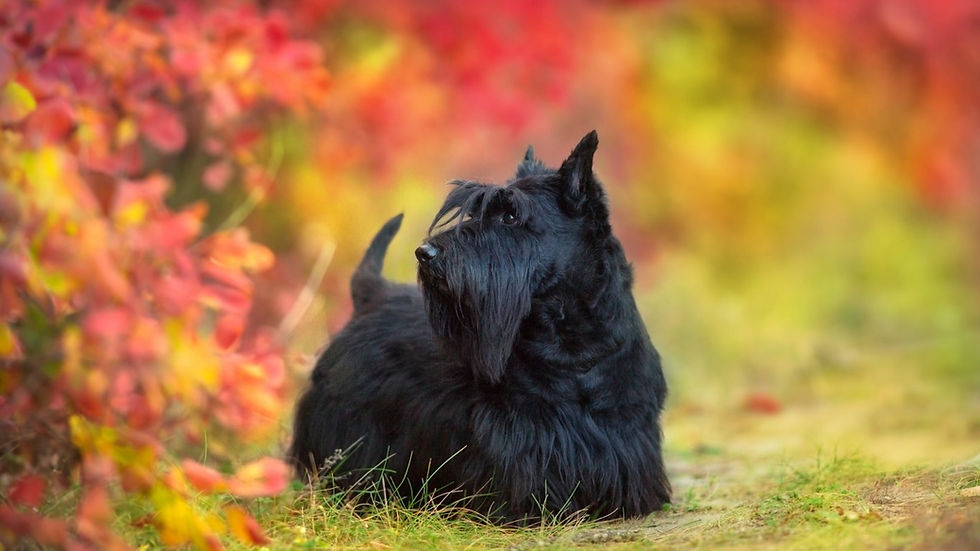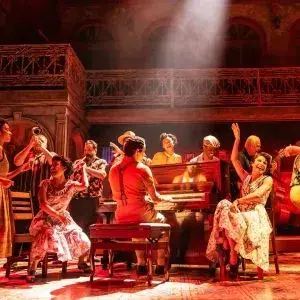Click the tartan to view its entry in The Scottish Registers of Tartans which includes registration details, restrictions, and registrant information.
Unregistered tartans may link to one of the web's online design environments for similar information.
For any questions about reproduction of designs or weaving of these tartans, please contact the registrant directly or via this website.
American Premiere of Ceilidh
“It’s about family, legacy, and the kind of music that fills your heart and lifts you to your feet. Come and find a hand to hold.”
A new musical and new tartan are gracing the stage as "Ceilidh" is set to premiere in Baltimore, Maryland, at the France-Merrick Performing Arts Center's M&T Bank Exchange, running from September 6th to October 12th, 2025.
This North American premiere production draws its inspiration from one of Scotland’s oldest and most beloved social customs—the ceilidh itself, a gathering of music, storytelling, and spirited dance that has connected communities for centuries. The idea for the show was born from the creative vision of Scottish writers Scott Gilmour and Claire McKenzie, who sought to transform the living, breathing tradition of the ceilidh into a theatrical experience. Their goal was to capture not only the music and movement, but also the sense of kinship, shared memory, and intergenerational bonds that these gatherings foster.
The musical first took shape in Scotland, where Gilmour and McKenzie—working under their acclaimed company Noisemaker—began exploring how traditional songs, dances, and the role of the “caller” could be reimagined for the stage.
Unlike a conventional musical, Ceilidh unfolds around and among its audience, who become part of the living tradition through lively Scottish dances and the infectious energy of the caller’s voice. In doing so, the show doesn’t just present a story onstage—it invites everyone present to take part in the cultural ritual, echoing the true spirit of the ceilidh itself.
Mirroring the emotion of the show, a whirlwind of lively Scottish dances, this tartan design was inspired by the counts that exist within the songs and dances. From dance crib sheets, to reel like multiples of 4, the design includes a specific threadcount to honour the musical writers and their grandparents that inspired this story. The colours used for this design are intended to reflect the colours associated with Scotland’s national flag, the Saltire, and The Lion Rampant.💛 🧡 💙 🏴 🎭 🎶 🕺 💃
The word ceilidh (pronounced kay-lee) is most commonly associated today with Scotland, but the tradition has deep roots across the wider Celtic world. Its spelling varies—céilí in Irish Gaelic, cèilidh in Scottish Gaelic, and sometimes anglicized simply as kaylee. At its heart, the term means a “gathering” or “visit,” and it historically referred to social evenings in homes or village halls where people came together to share stories, sing, dance, and celebrate community.
In Scotland, the ceilidh became strongly identified with music and dance. Live fiddle, accordion, or bagpipe tunes provided the backdrop as “callers” led group dances ranging from lively reels to more sedate waltzes. These dances were communal rather than performance-based—participation mattered more than perfection—and they served as a way to knit communities together across generations. Over time, especially in the 19th and 20th centuries, the ceilidh evolved from an informal home-based gathering into a more structured social dance event, often held in parish halls, schools, or community centers.
In Ireland, the céilí developed with a slightly different emphasis. While music and storytelling remained central, the Irish céilí also fostered the preservation of specific traditional dances. With the Gaelic Revival of the late 19th and early 20th centuries, céilís became a vital tool for teaching and transmitting Irish dance forms, such as reels, jigs, and set dances, many of which are now world-famous thanks to Irish dance troupes.
Beyond Scotland and Ireland, similar traditions existed across Celtic communities in Wales, Cornwall, and the Isle of Man. Though the exact word ceilidh was not always used, gatherings of music, song, and dance served the same communal function—bringing people together, reinforcing shared culture, and carrying oral traditions forward. Today, whether spelled céilí, cèilidh, or ceilidh, the word evokes a spirit of joy, hospitality, and cultural continuity. In Celtic diasporas around the world, from Nova Scotia to New Zealand, ceilidhs continue to thrive, blending ancient customs with new expressions while keeping the heart of the tradition alive.
For more about this current production, click the photo of the cast in performance!









